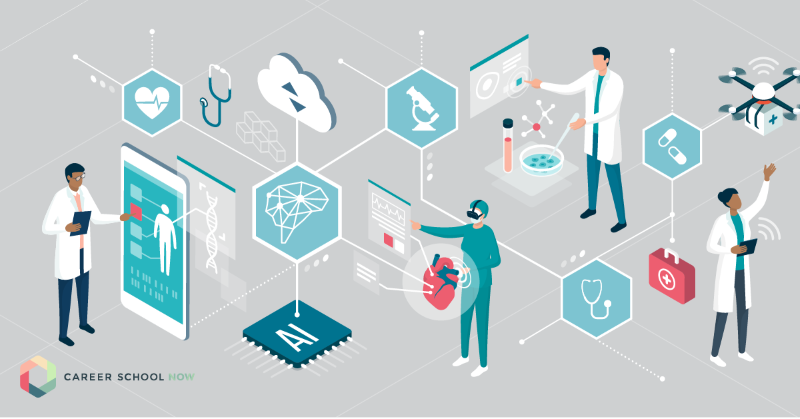Medical Administration Programs: What to Seek in a Top quality Program
Medical Administration Programs: What to Seek in a Top quality Program
Blog Article
Best Practices in Medical Administration for Improving Effectiveness and Reducing Costs
In the ever-evolving landscape of healthcare, the pursuit of ideal practices in clinical administration is vital for improving efficiency and suppressing expenses. By incorporating advanced technologies such as electronic health and wellness documents and telemedicine, doctor can improve operations and enhance individual care. However, modern technology alone is not a cure all; enhancing resource appropriation and fostering collective communication among care teams are just as crucial (medical administration). As companies strive to stabilize quality and price, what methods should be prioritized to attain these dual goals? The response to these inquiries hold the key to a much more lasting healthcare system.
Leveraging Advanced Modern Technology
The integration of digital remedies into healthcare systems has actually transformed the means centers operate, improving processes and enhancing person care. By systematizing individual details, EHRs get rid of the demand for troublesome documents and help with smooth interaction amongst medical care suppliers.
Telemedicine is another technical advancement that has reinvented person communication. It uses benefit for both people and medical care specialists by making it possible for remote assessments, which can lower the need for in-person gos to and enhance consultation scheduling. Furthermore, telehealth platforms can extend health care access to rural or underserved areas, bridging gaps in treatment delivery.
Furthermore, using Expert system (AI) and equipment knowing is ending up being progressively prevalent in anticipating analytics, permitting for early detection of possible health and wellness issues and even more educated decision-making. These modern technologies, when incorporated properly, can boost diagnostic precision and personalize person therapy plans, eventually causing enhanced medical care results and operational efficiency.
Optimizing Resource Appropriation
Effective source allotment is critical for making best use of the effectiveness of clinical administration. By tactically handling sources such as personnel, equipment, and funds, medical care centers can significantly enhance their functional efficiency, improve individual end results, and minimize unnecessary expenses. The initial action in enhancing source allotment involves conducting a thorough evaluation of existing properties and identifying areas where resources may be underutilized or overextended. This analysis needs to be data-driven, using metrics and analytics to notify decision-making procedures.
Focusing on source allotment based upon patient demands and solution demands is crucial. This entails lining up resources with high-demand locations, such as emergency care or specialized treatments, to make certain timely and effective individual care. Carrying out versatile staffing models can additionally enhance labor resources by adjusting workers allotment in response to fluctuating individual volumes. Furthermore, accepting telemedicine and various other technological services can alleviate physical resource constraints by using alternate opportunities for patient-provider communications.
Funds ought to be meticulously checked and designated with calculated insight to sustain both short-term functional demands and lasting institutional objectives. This includes investing in training programs that enhance personnel expertises and taking on energy-efficient techniques that decrease operational costs (medical administration). Ultimately, a browse around this site maximized source allocation approach cultivates a lasting healthcare environment that is receptive, reliable, and monetarily prudent
Streamlining Workflow Processes
When medical care facilities objective to enhance functional effectiveness, improving process procedures comes to be a crucial focus. Effective workflows minimize redundancy, remove unneeded actions, and enhance sychronisation amongst healthcare experts. This technique not just accelerates service shipment however additionally improves the quality of client treatment.

Next, innovation assimilation plays a considerable duty in simplifying operations. Implementing electronic health documents (EHRs) and digital doctor order entry (CPOE) systems decreases documents, lessens human error, and makes certain details comes to all pertinent workers. In addition, leveraging telemedicine systems can simplify patient consultations and follow-ups, lowering the stress on physical infrastructure.

Eventually, streamlined process cause cost reductions and improved individual satisfaction, Visit Your URL fostering an extra lasting health care atmosphere.
Enhancing Data Monitoring
Structure upon streamlined workflows, optimizing data monitoring comes to be a vital component beforehand medical care administration. Efficient data management systems are crucial for keeping accurate patient records, boosting decision-making, and making sure compliance with regulative criteria. By implementing durable data monitoring services, medical care facilities can improve the high quality of patient care while all at once reducing operational expenses.
One secret aspect of improving data monitoring is the combination of innovative digital health record (EHR) systems. These systems help with the seamless exchange of individual details throughout different departments, minimizing duplication of examinations and decreasing errors. A properly designed EHR system supports data analytics, making it possible for doctor to recognize patterns and make notified decisions relating to person care.
In addition, safeguarding patient information is extremely important. Embracing comprehensive cybersecurity steps, consisting of encryption and regular audits, makes sure the honesty and confidentiality of delicate information. This not just protects individuals but additionally preserves the establishment's track record.
Buying team training is one more critical factor. Informing healthcare experts on data administration methods boosts their ability to properly make use of technology, resulting in improved individual outcomes. To conclude, enhancing information administration with innovative technology and thorough training is essential for achieving performance and price decrease in clinical management.
Fostering Collaborative Interaction
A crucial component ahead of time medical management is fostering collaborative interaction amongst health care specialists. Reliable communication is vital for ensuring smooth client care, optimizing treatment end results, and minimizing mistakes. By urging open dialogue and sychronisation across multidisciplinary teams, healthcare organizations can improve their functional performance and reduce unnecessary Get More Information costs.
Central to this method is the integration of communication technologies such as digital health documents (EHRs) and protected messaging platforms, which promote the quick exchange of critical client details. These devices enable medical care carriers to access and share information in actual time, making sure that all team participants are educated and straightened in their decision-making procedures. Routine team conferences and interdisciplinary rounds can even more advertise a culture of partnership and responsibility.
Educating programs concentrated on boosting interaction skills are additionally vital. Ultimately, promoting joint interaction leads to boosted healthcare delivery and cost financial savings.

Verdict
Including advanced modern technology, such as digital wellness records and telemedicine, alongside enhanced resource allotment and structured process procedures, is vital for enhancing efficiency in medical management. Effective information monitoring and fostering collaborative interaction amongst medical care groups are important for decreasing redundancies and enhancing treatment quality. By prioritizing preventive treatment and participating in quality enhancement campaigns, medical care companies can accomplish considerable price savings and improved client results, thus making sure sustainable medical care delivery in a progressively complicated atmosphere.
Report this page